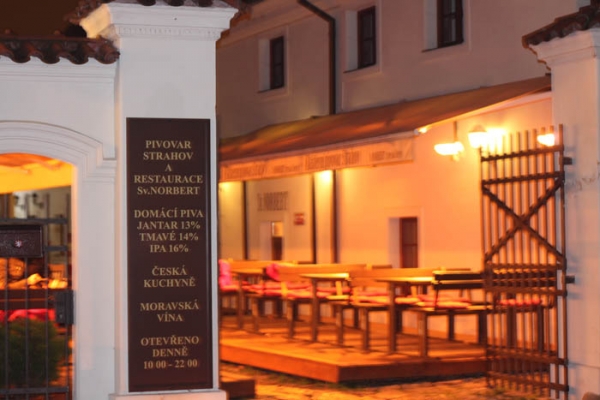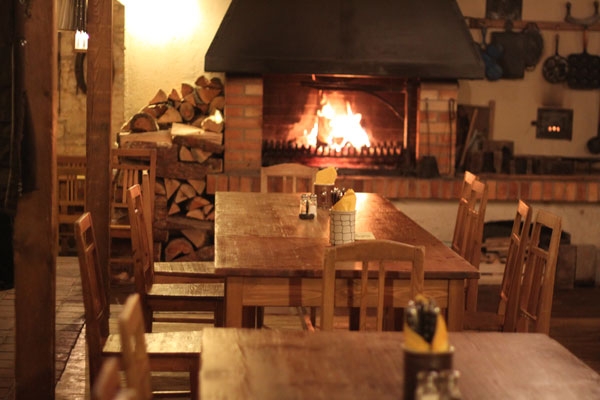
Oh, Brother! A Quick History of Monastic Brewing
Monastic breweries have come a long way since their humble origins but if you are like me, you may have found yourself wondering why monasteries make some of the tastiest, and strongest, beers in the world. Like with many other things, the answer lies in history.
During the Middle Ages, beer was already the most consumed beverage in Europe - much like in the Czech Republic today. Beer was safer than drinking water and pretty much everyone, children and old people alike, imbibed. Most of the brewing was done by women as a way to make some extra household money. They didn't have many resources to start with so they used poor quality ingredients - basically, anything that they found lying around the house or farm - and would throw it all together and hope for the best. They didn't understand much about sanitation so often times the beer would be spoiled and was often of poor quality.
Then the Cistercian monks got into the game and changed everything…….
Monasteries started brewing beer as early as the 5th century and at its peak, over 600 monasteries in Europe were brewing their own beer. The monks followed a principle of being completely self-sufficient and also made it their duty to provide pilgrims and visitors with food and drink. Logically, they decided to start brewing their own beer since it was the beverage of choice, plus a great little money maker.
The monks attacked their new job with military precision, kept careful records of the recipes that they used and worked tirelessly to keep making their beers better. So why was so much emphasis placed on the quality of the beer? Monks believed that they needed to make the best product possible since they were working for God and a sub-par beer would be a major offense. In order to keep up with growing demand, they figured out new ways to mass-produce beer and added hops to it which not only balanced out the sweetness from the malt but also acted as a preservative.
The original design of the monastery breweries in the Middle Ages included 3 separate brewing areas which all brewed a different quality of beer: one for beer that would be sold to customers and travelers, one that would be given to the poor and one for the monk’s own use. The monks certainly did enjoy the fruits of their labor. They drank up to four liters of ale per day per person and even relied on beer for nutrition during fasting. Beer on a very empty stomach seems like a risky idea today; however, these were serious beer drinkers and could clearly handle their alcohol.
Two of Prague’s most well-known monastic breweries are located at Strahov Monastery and Břevnov Monastery. The beer isn’t made by monks any longer and both breweries are leased out to private companies. However, the beer is still top-notch quality and the history of the monasteries is intriguing.
Strahov Monastery, built in 1140, began brewing beer as early as 1142 and operated intermittently from then until 1907. The brewery and monastery were damaged during the Hussite Wars and then again by the Swedish Army in 1648 at the end of the Thirty Year’s War. The brewery was restored in 2000 and, following in the footsteps of those before them, they provide delicious St. Norbert beer to thirsty tourists and locals. It is perched on a hill above Mala Strana and just a short walk to the Prague Castle. The view from the nearby gardens over the city is spectacular and their IPA is the perfect way to relax after maneuvering your way through crowds of tourists. The monastery can be reached by the # 22 tram to Pohořelec or by a steep-walk up Uvoz Street.
The brewery at the Břevnov Monastery was built in 993. The monks originally had a monopoly on beer sales in Prague and it wasn’t until Pope Innocent IV became pope from 1243 to 1254 that a previous ban prohibiting competition was overruled. Sadly, the monastery was damaged during the Hussite War and by fire and the current buildings date from the 18th century. The most-recent version of the brewery opened in 2012. The onsite restaurant has a quaint, rustic feel to it and serves delicious beer and traditional Czech food but reservations are highly recommended. The monastery is a little further out of town than Strahov but can easily be reached by the #22 tram. The surroundings make the trip worthwhile though as it set in a gorgeous park and the church is open for viewing if you want to add a little more history or culture to your day.
No matter where you decide to go for your next monastic beer, make sure to thank the beer-gods for the wonderful gift that history has bestowed upon you.
